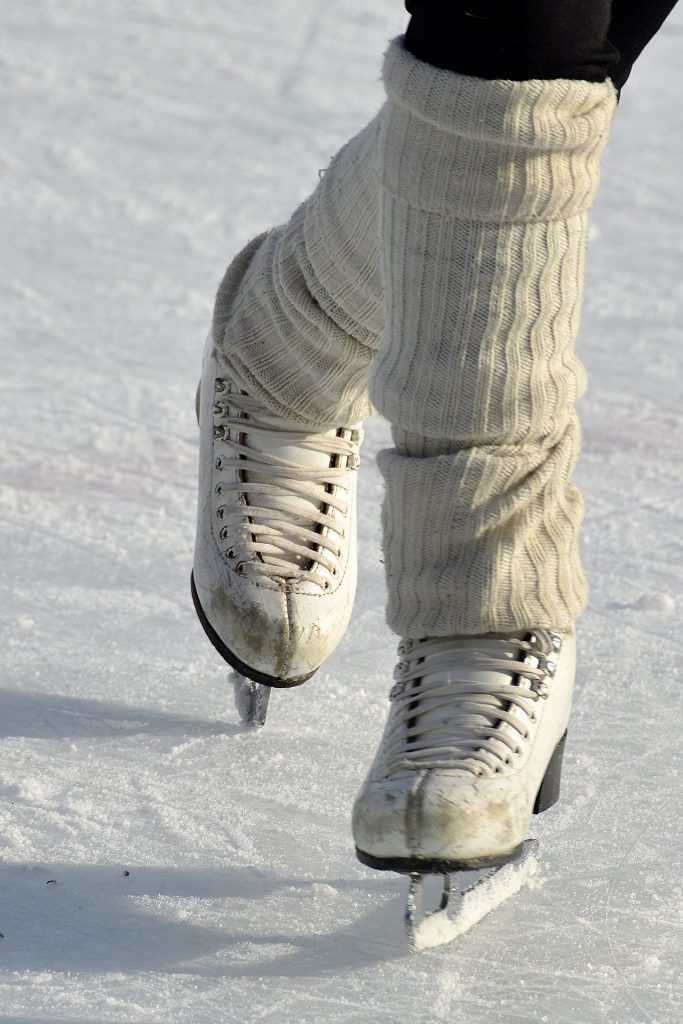Whether you’re snowboarding, fishing, skating, or just taking a slippery stroll, knowing ice safety could save your life.
During the winter season, families from Maine to Siberia will take to frozen lakes and ponds to ice fish, play hockey, or snowmobile. Accidents will happen, but they can be avoided by following these guidelines from ice safety experts.

Ice Safety Do’s & Don’t’s
DO remember that ice is really NEVER 100% safe. No matter its measured thickness, walking or riding on ice always comes with some risk.
DON’T walk out on the ice until there are at least 4 inches of clear, solid ice below. Thinner ice will support one person, but since ice thickness can vary considerably, especially at the beginning and end of the season, 4 inches will provide a margin of safety. Some factors that can change ice thickness include flocks of waterfowl and schools of fish. By congregating in a small area, fish can cause warmer water from the bottom to flow towards the surface, weakening or, in some cases, opening large holes in the ice.
DO go out with a buddy and keep a good distance apart as you walk. If one of you falls in, the other can call for help with a cell phone. The companion can also attempt a rescue if one of you are carrying rope or other survival gear.
DON’T measure ice thickness in only one spot. Take multiple readings in completely different areas to get a good feel for the actual ice depth.
DON’T park snowmobiles right next to each other on the ice. This will place undue stress on one small portion of the ice, increasing the chance of ice fracture. Spread them out.
DO carry a long length of rope when riding on ice. This may be a victim’s only chance of being pulled to safety.
Judging Ice Depth and Strength
“Thick and blue, tried and true. Thin or crispy, way too risky.” That’s the old saying, and it’s a good one. Take a hard look at the ice before you leap. Clear blue ice is the strongest, and it still takes three inches to safely hold a single person, and five to six inches to safely hold a group of people or a snowmobile. Milky, honeycombed ice that has air bubbles or snow crystals trapped in it is much weaker and less trustworthy.
Snow coverings complicate things with ice. Not only does it keep you from visually checking the ice for inconsistencies, but it also insulates and inhibits ice formation. Be extra careful before venturing out onto a snow-covered pond or lake.
The only way to tell how thick ice is, of course, is to cut a hole in it with a chisel or auger. Start near shore and make several test cuts as you go out. Remember that ice thickness isn’t consistent and water currents (particularly around narrow spots, bridges, inlets and outlets) are always suspect. Never trust the ice on a river or stream — it can be several feet thick in one place, and unsafe only a short distance away.
On really cold days, you are likely to hear the ice rumbling and pinging, almost sounding as if it is cracking. Sometimes you’ll even see long cracks developing. Don’t panic. As long as you KNOW the ice depth is within safe limits, it’s really nothing to worry about. Those rumblings and crackings are the sound of pressure being relieved as more ice forms beneath the surface. The ice is actually getting thicker.
When the Worst Happens

If you fall through the ice, here’s what you need to know!
Devote all your efforts to getting out of the water. Act quickly before you lose full use of your hands and limbs. Climb onto anything floating.
In frozen waters, you have about 20 minutes before you will lose consciousness. This time can be extended by keeping calm, keeping your head and neck out of the water, and by moving only if necessary to escape. If you know you can’t get out, keep still until help arrives.
If you are alone and think you can get out, place your arms up on the ice while violently kicking your legs in an attempt to push yourself out of the water and up on the ice. If you do indeed get out, do not stand up. Gently push yourself while remaining flat until you get a safe distance away from the ice fracture. This will help you from returning back into the water.
If you are unable to get out, you should immediately stop moving and go into “Heat Escape Lessening Position” (H.E.L.P). Hold knees to chest to protect trunk of body from heat loss. Wrap arms around legs and clasp hands together. Keep neck and head out of water. Remain as still as possible, however painful. Intense shivering and shaking are natural body reflexes in cold water but cause rapid core heat loss which will speed hypothermia.
Do not attempt to swim unless it is to reach a nearby shore, boat, another person, or a floating object on which you can climb or lean. Unnecessary swimming “pumps” out warmed water between your body and your clothing circulating new cold water to take its place. Unnecessary movement of your arms and legs pumps warm blood to your extremities, where it cools quickly, reducing your survival time by as much as 50%.
If you are in the water, unable to get out and awaiting help, do not remove clothing, despite what you may have been told. Instead, button, buckle, zip, and tighten collars, cuffs, shoes and hoods. Cover your head if possible. A layer of water trapped inside your clothing will be slightly warmed by your body and help insulate you from the colder water, slowing your rate of body heat loss.
First Aid for Hypothermia

Any person pulled from cold water should be treated by medical professionals for hypothermia. Symptoms include intense shivering, loss of coordination, mental confusion, cold and blue (cyanotic) skin, especially around lips or fingers, weak pulse, irregular heartbeat and enlarged pupils. Once shivering stops, core body temperature begins to drop critically.
Your goal in treating hypothermia is to prevent further body cooling. Severe cases call for rewarming by trained medical personnel. In all cases, arrange to have the victim transported to a medical facility immediately.
What To Do: Gently move the victim to warm shelter. Check breathing and heartbeat. In cases of hypothermia you should monitor victim very closely. Start CPR if necessary. Remove victim’s clothing with a minimum of movement, cut them away if necessary. Lay victim in a level face up position with a blanket or other insulation beneath them. Wrap victim in warm blankets, sleeping bag or other warm covering.
If there will be a long delay before victim arrives at a medical facility, use the following rewarming techniques:
Gentle Rewarming is key
Apply heating pads or hot water bottles (wrapped in a towel to prevent burns) to the head , neck, chest, and groin. Do not apply heat to arms and legs or give them a hot bath. This forces blood out through the cold extremities and back to the heart, lungs and brain, which will further drop the core temperature. This can cause “after drop” which can be fatal. Do not massage or rub the victim, rough handling may cause cardiac arrest. Apply warmth by direct body to body contact. Have someone remove their own clothes and lay next to victim skin to skin. Wrap both in blankets. If person is alert enough you can give them hot drinks. If they are unconscious or stuporous do not give them anything to drink. Never give alcoholic beverages.
All hypothermia victims must be transported to a medical facility immediately, even if they appear to be OK. “After drop” and cardiac problems are known to happen during the re-warming process and are life threatening, even if the victim seems to be recovering without problems.
Never Give Up!
Side Note: Cold Water Drownings: Some apparent cold water drowning victims may look dead, but may actually still be alive! A phenomenon called the “mammalian diving reflex” can be triggered by cold water. This reflex, common to whales, porpoises and seals, shuts off blood circulation to most parts of the body except the heart, lungs and brain and slows the metabolic rate.
What little oxygen remains in the blood is circulated where it is needed most. Do not assume that a person who is cyanotic and who has no detectable pulse or breathing is dead. Always administer CPR and transport the victim to a medical facility immediately for specialized rewarming and revival techniques. Most frozen waters are cold enough to trigger this reflex. People have been revived after having been submerged for extended periods, some in excess of 45 minutes!
Never give up.
Dear Reader: This page may contain affiliate links which may earn a commission if you click through and make a purchase. Our independent journalism is not influenced by any advertiser or commercial initiative unless it is clearly marked as sponsored content. As travel products change, please be sure to reconfirm all details and stay up to date with current events to ensure a safe and successful trip.
Awesome post!
Thanks for sharing..